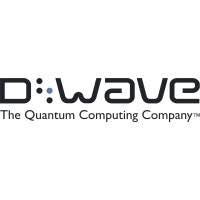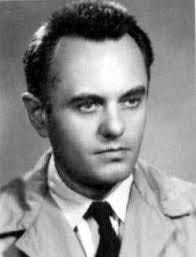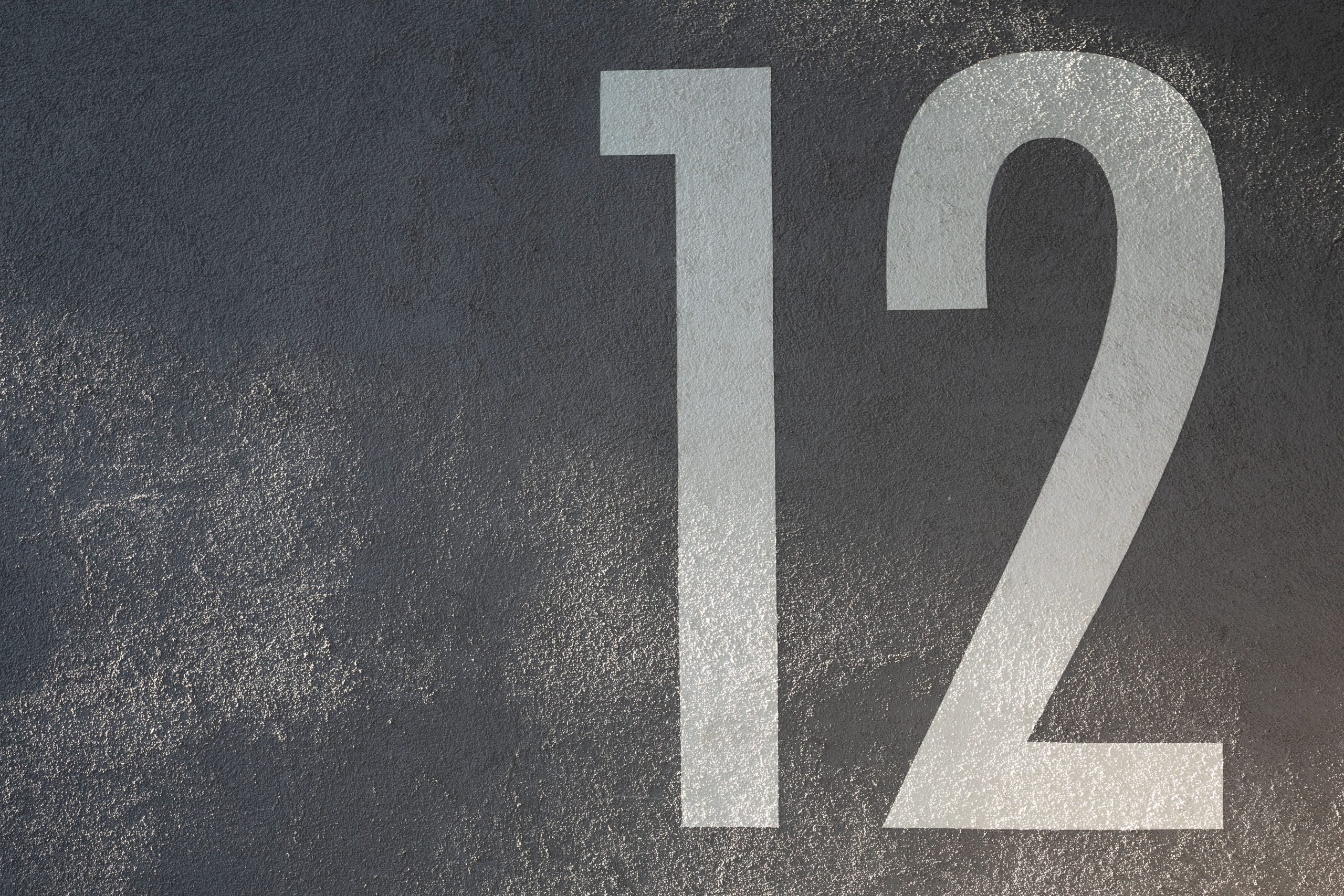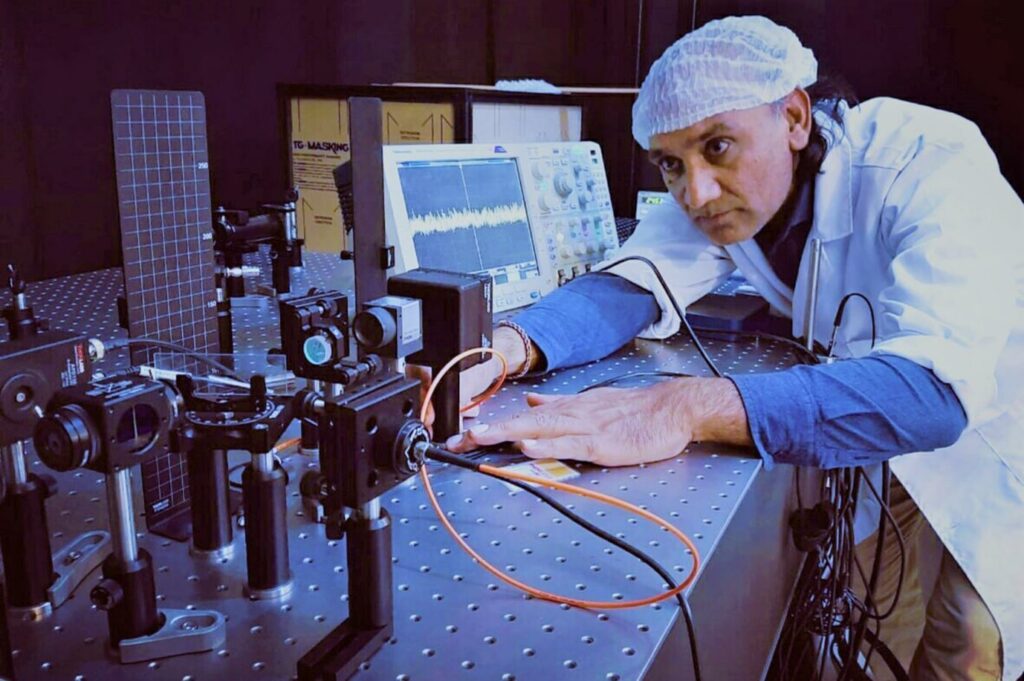
A Most Intelligent Photo
For many people, the story of quantum computing (QC) and quantum information science (QIS) really began way back in 1927 at the Solvay Conference, in Belgium. Formally the fifth conference ever organized, the topic of agenda was on ‘Electrons and Photons’. All the biggest names in physics then — as well as now — were in attendance: Albert Einstein, Niels Bohr, Werner Heisenberg, Paul Dirac, and Erwin Schrödinger, and the photo taken of the event has been dubbed ‘the most intelligent picture ever taken’.

True to form, some great discussions (though I wasn’t there) went on, and the theory of quantum mechanics was developed further until it was properly formalized in the 1930s by the groundbreaking work of Paul Dirac, David Hilbert and John von Neumann.
Now, this is not denying what happened prior to 1927 was unimportant, because it was truly important: starting with the early 19th century’s ‘double-slit-like’ experiment by Thomas Young, Michael Faraday’s 1838 discovery of cathode rays, Gustav Kirchoff’s black-body radiation dilemma a generation later, and Ludwig Boltzmann work until we come to Max Planck’s seminal quantum hypothesis in 1900, the foundations were laid for what the geniuses at Solvay discussed in the late 1920s.
All this, it turned out, would be very good for the development — starting some fifty years later — of quantum information theory. Before that, though, quantum mechanics would have a darker side, being the science that finally produced the atomic bomb that flattened Hiroshima and Nagasaki, thankfully ending the Second World War but killing thousands of innocents in the process.
Yet, out of the bad came the good again, a new theory, a way of manipulating the smallest particles known to man for our own benefit, quantum information theory (QIS) and quantum computing (QC).

I will soon list, in no particular order of importance, 12 of the most pioneering discoveries/theories/events in the history of QIS. Although I list these twelve, there are many that — for the sake of time— I have unfortunately left out.
Since the mid-2010s, there has been an exponential speed-up in the rate of discoveries within the space. From Stephen Weisner’s work in the late 1960s up to about 2006, you would have been lucky to get three or four important events a year. Now — there seem to be one or two ‘incredible breakthroughs’ a week. In the grand scheme of things, though they may seem important at the time (and TQD will continue delivering important breaking news and research work done), they probably aren’t as earth-shattering to the development of the industry as the ones about to be listed.
They say hindsight is a clever man, and TQD is sure the best discoveries in QIS are still to come. For now, though, we only have the grand past to work with.
Enjoy.
1. Alexander Holevo’s paper (1973)
Let’s start off in the early days, shall we with Russian mathematician and one of the pioneers of QIS, Alexander Holevo. A member of the Steklov Mathematical Institute since the late 1960s and a prolific author, he is now a professor at Moscow State University and Moscow Institute of Physics and Technology. Holevo is famous for his eponymous theory called Holevo’s theorem (or Holevo’s bound) which shows that n qubits are able to carry more than n classical bits of information, but at most n classical bits are accessible. The paper, published in 1973, proved coding theorems in quantum information theory while also revealing the structure of quantum Markov semigroups and measurement processes.
2. Lov Grover invents the quantum database search algorithm while at Bell Labs (1996)
Indian-American computer scientist Lov Grover is the bright mind who came up with the database search algorithm used in quantum computing named after him, which goes on to prove the ‘quadratic speedup is not as dramatic as the speedup for factoring, discrete logs, or physics simulations. A quantum computer has many advantages over a classical computer, one of which is its superior speed when searching databases. Grover’s algorithm proves this and can be applied to problems that can only be solved by random searches, ones that can take advantage of this quadratic speedup.
3. The founding of D-Wave Systems (1999)
The company may have its critics in the past with its quantum annealing approach to the core IP technology where optimization problems abound, but you’ve got to give it to the Burnaby, British Columbia company for starting a trend. Being the Apple of your industry — and all the kudos it can bring — hasn’t gone to their heads: twenty-two years after its incorporation, D-Wave Systems has released four iterations of its quantum computer, the last one coming in 2017, the D-Wave 2000Q, and has such prestigious customers as Lockheed Martin, Los Alamos National Laboratory, Google/NASA/USRA, and Volkswagen to back up the claim they are are a reliable company with a viable product.

The company’s next-generation Advantage quantum computer, powered by the Pegasus P16 quantum processor chip, has over 5000 qubits with impressive 15-way qubit connectivity. Led these days by CEO Alan Baratz, whatever the outcome, founders Haig Farris, Geordie Rose, Bob Wiens, and Alexandre Zagoskin have written D-Wave Systems and themselves into the QC history books.
4. Google’s quantum computer research team’s Quantum Supremacy claim (2019)
‘We trust the media too much these days’ says a journalist working at TQD, yet with all the cries off Twitter, Facebook, Linkedin and other social media sites — plus the input from the more veritable tech publications like TechCrunch, TNW, PC Mag, Tech Republic, Venture Beat and my favourite Wired — the screams create a hullabaloo of such intensity that the tremours ripple unabated, not always earned, unfortunately. Google’s claim to attaining Quantum Supremacy last year had many geeks excited; others, less so. The announcement was preceded by Google’s director of engineering and distinguished scientist Hartmut Neven’s prophetic proclamation only a few months before that suggested quantum supremacy could occur sometime in 2019.
It did. And the result? Neven and his law will live forever.
Whether it’s true or not, what Google did was force the other global corporations like IBM and Microsoft to take note, raise their game — because it worked: things are heading to the next level as far as QC is concerned. Quantum Supremacy could mean one thing to you and another to me but as the German philosopher Willem Hegel’s dialectical solution of problem → reaction → solution.
5. Roman Stanisław Ingarden’s ‘Quantum Information Theory’ paper (1976)
While Apple’s founding fathers Steve Jobs and Steve Wozniak were forming the groundwork for the personal computer in a Los Altos, California garage, a fifty-six-year-old Polish professor obsessed with Japan, Roman Stanisław Ingarden, had published the groundbreaking (though little known) paper Quantum Information Theory. In it, he argued Claude Shannon, the father of information theory, assumes that the mathematical theory of communication does not hold tight when talking about quantum information.

Like for like, then.
Although Ingarden was a trained physicist, I don’t suppose he realized at the time of writing his theory would go a long way in changing the future.
6. Paul Benioff’s description of the quantum mechanical model of a computer and Yuri Manin’s contribution to the field (1980)
I’ve mentioned two events here in one year, as both of them were seminal in the development of quantum information science and QC. If one had to choose, then 1980 would have to be quantum information theory’s Annus mirabilis for the simple reason two groundbreaking events took place over a 365-day period.
By the 1970s, American physicist Paul Benioff had begun research into the theoretical possibilities of a viable working quantum computing. From that research came an important paper, The computer as a physical system: A microscopic quantum mechanical Hamiltonian model of computers as represented by Turing machines quantum information theory, published in the Journal of Statistical Physics. In it, he details how his machine model could work under the laws of quantum mechanics by describing a Schrödinger equation description of Turing machines.
Benioff’s work was roughly at the same time that Soviet physicist Yuri Manin’s work, chronicled in his influential book Computable and Uncomputable (first published in Russian), described his own ideas about a working quantum computer.
7. The First Conference on the Physics of Computation at MIT (1981)
If the Solvay Conference photo of 1927 was the most intelligent picture ever taken, then the group shot photographed at Endicott House, in Dedham, Massachusetts, in the late spring of 1981, has to come in second. MIT was the place to be that year if quantum computation was your thing, where the First Conference on the Physics of Computation at MIT took place. Names like Freeman Dyson, Tom Toffoli, John Wheeler, Frederick Kantor, Konrad Zuse and other luminaries were in attendance — so were physics geniuses Richard Feynman (Wheeler’s student) and Paul Benioff (again).
Maybe what went on there over those three days in 1981 had something to do with the ambience of Endicott House, so aptly put by Jan Wampler, MIT Architecture Professor Emeritus:
“For many years, I assigned a project to my undergraduate students in architecture to design a build a structure to keep the rain, cold and wind out while sleeping over for the night. Endicott was the perfect place to do this.They slept the night in their structures and early in the morning had breakfast. This taught them that design is important, but testing with the elements was most important. Of all the exercises I gave, this one has always been a highlight of the semester. Without the staff of Endicott and the beautiful setting, I would not have been able to give out this exciting assignment. Additionally, I have been at conferences of my department hosted at Endicott, the perfect place to get away from the urban setting of MIT and experience the beautiful setting of Endicott. This is true either in fall, winter or spring. Endicott has always been a special place for conferences.”
Whatever Wampler’s opinion, the conference was to change the face of quantum information theory forever and lead to, some three decades later, a technological revolution.

Well, anyway, during the conference Benioff and Feynman gave individual talks on quantum computing. Based on Benioff’s paper from the year before Quantum mechanical Hamiltonian models of discrete processes that erase their own histories: application to Turing machines, he discussed that a computer could operate under the laws of quantum mechanics. When Feynman — the brash, charismatic Caltech professor who had worked on the Manhattan project — stood up to talk about that it seemed nigh on impossible to efficiently simulate the evolution of a quantum system on a classical model computer, his solution was by saying he proposed a basic model for a quantum computer instead.
These two speeches equal a watershed moment in the history of quantum computers, there’s no denying that.
8. The National Quantum Initiative Act (2018)
Love him or loathe him, outgoing President Donald Trump may have caused political havoc in the US and globally for many, but this sole policy act in late 2018 gets the thumbs up from TQD at least. The National Quantum Initiative Act is a sure sign that the United States — the world’s leading quantum power — is serious about the technology and wants to compete with its nearest rival: the People’s Republic of China. A competitive beast by nature, let’s hope Trump’s actions will be continued by his successor, the Democrat Joe Biden.
Under the bill, the National Quantum Initiative Act calls for:
[…] the Subcommittee on Quantum Information Science of the NSTC to: coordinate the QIST research and education activities and programs of the federal agencies; recommend federal infrastructure needs to support the program; and evaluate opportunities for international cooperation with strategic allies.
The initial ten-year plan is a counter to China’s already developing quantum information science technology (QIST) sector, but will also open the eyes of other regions, namely Europe and Russia.
9. Peter Shor formulates his important algorithm (1994)
American mathematician Peter Shor, while working at AT&T’s Bell Labs in New Jersey (what’s in the water there?), discovered one of the most important algorithms in quantum computing. The magical polynomial-time algorithm lets a quantum computer calculate integer factorization (an integer n, find its prime factors) very quickly. To date, IBM’s circuit-based Q System One quantum computer factored the largest number (35) using Shor’s algorithm, though larger numbers have been factored by quantum computers implementing algorithms based on the quantum annealing subset.
While Shor’s efforts may seem unimportant to the uninitiated, it is noteworthy as it means that public-key cryptography based on the Rivest–Shamir–Adleman (RSA) algorithm could be broken, leading to a new cryptographic paradigm.
10. David Deutsch’s account of a universal quantum computer (1985)
In his 1997 book The Fabric of Reality, University of Oxford physicist David Deutsch claims:
“Quantum computation is … nothing less than a distinctly new way of harnessing nature … It will be the first technology that allows useful tasks to be performed in collaboration between parallel universes, and then sharing the results.”
That journey, though, started more than a decade before in 1985, when this pioneer of quantum computation first detailed his thoughts on the subject in his paper Quantum theory, the Church–Turing principle and the universal quantum computer. In it, Deutsch put forward that the Church–Turing hypothesis of ‘every finitely realizable physical system can be perfectly simulated by a universal model computing machine operating by finite means’, while also proposing the adoption of entangled states and Bell’s theorem for quantum key distribution (QKD).

Famous for his multiverse theory inline with the many-worlds interpretation (MWI) of Hugh Everett III and some other scientific hypotheses many experts criticize as being ‘wacky’, nobody today can deny Deutsch’s importance in the field of QIT.
11. The founding of 1QBit, the world’s first dedicated quantum computing software company (2012)
Every hardware company needs its software equivalent, and 1QBit — a Canadian quantum hardware-agnostic company founded in 2012 — complies with that detail. Founders Andrew Fursman and Landon Downs ‘recognized the possibilities quantum computers were about to unlock and embarked on building the expertise and technology required to connect industry problems to this new hardware.’

Nine years after that realization, 1QBit has gone from strength to strength and is now one of the most respected in the industry.
1QBit, the Computer Usage Company (CUC) of the quantum age.
12. Formulation of the Deutsch–Jozsa algorithm (1992)
Like his esteemed colleague Paul Benioff, David Deutsch has managed to sneak himself on to two events that have shaped the history of quantum information theory. In 1992, along with Australian mathematician Richard Jozsa, the pair came up with the Deutsch–Jozsa algorithm, one designed that was ‘exponentially faster than any possible deterministic classical algorithm’. With Richard Cleve, Artur Ekert, Chiara Macchiavello, and Michele Mosca making improvements to it in 1998, it is rather impractical these days but still goes to show the power of men’s minds and how, even back in the late 1990s, the idea of quantum computers and their potential was at the forefront of a handful of great thinkers’ minds.
Parting Words
I hope you liked TQD’s list, and as I mentioned earlier, there were many events for which I had no room: Stephen Wiesner’s conjugate coding, for example. Alexei Kitaev’s work and Shor’s algorithm execution for the first time at IBM’s Almaden Research Center. Artur Ekert’s efforts. The opening of the Institute for Quantum Computing at the University of Waterloo in the early 2000s and two dozen more.
If you found this article to be informative, you can explore more current quantum news here, exclusives, interviews, and podcasts.




















